This article was co-authored by Zora Degrandpre, ND. Dr. Zora Degrandpre is a Natural Health Doctor and Licensed Naturopathic Physician in Vancouver, Washington. She is a grant reviewer for the National Institutes of Health and the National Center for Complementary and Alternative Medicine. She received her ND from the National College of Natural Medicine in 2007.
There are 12 references cited in this article, which can be found at the bottom of the page.
wikiHow marks an article as reader-approved once it receives enough positive feedback. In this case, 83% of readers who voted found the article helpful, earning it our reader-approved status.
This article has been viewed 150,381 times.
Prostaglandins are a type of lipid that your body produces, which can lead to inflammation and pain.[1] While inflammation is a normal part of the healing process, too much prostaglandin can lead to chronic pain and discomfort. This can be especially troubling for women, because prostaglandins are produced during menstruation. Luckily, you may be able to control your prostaglandin levels with some easy dietary changes. Try these steps to see if your pain decreases, and don’t hesitate to see your doctor if you don’t notice any difference.
Things You Should Know
- Eat plenty of fruits and vegetables (especially pomegranates), fiber, and omega-3 fatty acids.
- Avoid saturated fats, omega-6, and processed foods while also cutting back on meat and animal products.
- Natural treatments like honey mixed with water and mangosteen extract can be helpful too.
Steps
Eating the Right Foods
Your diet can have a big impact on your overall health, and this goes for your prostaglandin levels as well. Some foods and dietary can naturally limit your body's prostaglandin production. Luckily, the dietary changes aren’t very difficult, and a few healthy choices can make a big difference. Try including more of the following foods in your diet to see if this works for you.
-
1Follow a generally healthy diet high in fruits and vegetables. This might seem like a simple step, but it really works. Studies show that a generally healthy diet that follows normal guidelines can lower overall prostaglandin levels. Particularly, diets high in fruits and vegetables have the best results.[2] Try to follow the healthiest diet possible to control your prostaglandin levels.
- Also include plenty of whole grains, legumes, lean proteins, fish, soy, and nuts in your diet.
-
2Block estrogen with a high-fiber diet. Sometimes, your body reabsorbs estrogen, which stimulates prostaglandin production. This is called hormone recycling. Luckily, fiber can bind to estrogen and prevent your body from reabsorbing it. Make sure your diet is rich in fiber to stop estrogen from causing higher prostaglandin production.[3]
- Good sources of fiber include beans, leafy green vegetables, nuts, and whole grains.
- Try to get as much fiber as you can from plant sources, because animal products can stimulate more prostaglandin production.
Advertisement -
3Include omega-3s to fight inflammation. Omega-3 fatty acids can prevent prostaglandin production and also help lower omega-6s, a building block for prostaglandins. The best source for omega-3s is fish, so have a few fish servings each week.[4]
- You can also get more omega-3s from fish oil supplements.
- If you’re a vegetarian or vegan, you can get omega-3s from flax and chia seeds and oil.[5]
-
4Eat more pomegranates. While all fruits and vegetables are good for you, pomegranates are best for lowering prostaglandin. The nutrients in this fruit can inhibit prostaglandin production and lower the overall levels in your body. Include some pomegranates in your diet to enjoy these benefits.
-
5Mix honey into water for a natural treatment. This sounds strange, but in a very small study natural honey possibly lowered prostaglandin levels. Mix 1.2 g (1/7 tsp) of natural honey per 1 kg (2.2 lb) of your bodyweight into 250 ml (1.1 c) of water. Drink this mixture once a day for 15 days.[6]
- For example, if you weigh 90 kg (200 lb), then you’d mix 108 g (15 tsp) of honey into the water.
- There’s a lot of sugar in this much honey, so this isn’t meant as a long-term treatment.
-
6Take mangosteen extract. In one study, extracts from the mangosteen plant lowered prostaglandin in rats. There's no evidence that it has the same effect in humans, but you can try it if you'd like to. Try taking a 40% ethanol extract from this plant to see if it works.[7]
- There is no universal dose for mangosteen, so always follow the instructions on the package or ask your doctor.[8]
Avoiding Inflammatory Foods
Of course, you also have to cut some foods out for the best results. Since prostaglandin is part of your body’s inflammatory response, cutting out inflammatory foods can also help lower the levels in your body. Try avoiding these foods to see if this helps you.
-
1Cut saturated fats out of your diet. High-fat diets in general tend to increase prostaglandin production, but saturated fat is a particular culprit. Try to reduce your saturated fat intake as much as possible to lower your overall prostaglandin levels.[9]
- Common saturated fat sources include red meat, poultry skin, whole-fat dairy products, butter and lard, ice cream, and coconut oils.[10]
-
2Reduce your omega-6 intake. While omega-3s can help reduce prostaglandins, omega-6s can actually increase it. This is because they’re the building blocks for lipids like prostaglandin. Try to reduce the amount of omega-6 sources in your diet.[11]
- Omega-6 sources include safflower, sunflower seeds and oil, corn, soybeans, pecans, Brazil nuts, and sesame oil.
-
3Eat fewer prepackaged and processed foods. These foods tend to be low in fiber, and can also increase the amount of estrogen in your body. This stimulates prostaglandin production. Do your best to eliminate processed foods from your diet and have fresh meals instead.[12]
-
4Have less meat and animal products. Animal products in general tend to increase the estrogen in your body, which leads to more prostaglandin. Try to reduce the amount of meat and dairy in your diet to avoid producing too much prostaglandin.
- Women with diets high in animal products also tend to experience worse menstrual pain, so reducing your intake can be helpful.
- Animal products like red meat are also high in saturated fat, which could stimulate prostaglandin production.
Medical Takeaways
Having high prostaglandins can cause chronic pain, so it's definitely a tough problem to deal with. Luckily, your diet can have a big impact on your body's prostaglandin production. Following a healthy diet can suppress prostaglandin, while avoiding inflammatory foods can prevent more from forming. These simple changes could make a big difference. If you don't notice any improvement, then visit your doctor to discuss other treatment options available.
Warnings
- Always discuss big dietary changes with your doctor first. If you don't follow the right diet, you could end up malnourished.⧼thumbs_response⧽
References
- ↑ https://www.yourhormones.info/hormones/prostaglandins/
- ↑ https://www.ncbi.nlm.nih.gov/pmc/articles/PMC4779331/
- ↑ https://news.usc.edu/24318/USC-cancer-researchers-report-fiber-estrogen-link/
- ↑ https://www.sciencedaily.com/releases/2006/04/060404085719.htm
- ↑ https://my.clevelandclinic.org/health/articles/17651-plant-sources-of-omega-3s
- ↑ https://pubmed.ncbi.nlm.nih.gov/12935324/
- ↑ https://pubmed.ncbi.nlm.nih.gov/12230104/
- ↑ https://www.drugs.com/npp/mangosteen.html
- ↑ https://www.ncbi.nlm.nih.gov/pmc/articles/PMC4779331/
- ↑ https://www.helpguide.org/articles/healthy-eating/choosing-healthy-fats.htm
- ↑ https://lpi.oregonstate.edu/sites/lpi.oregonstate.edu/files/pdf/newsletters/ss11.pdf
- ↑ https://www.pcrm.org/good-nutrition/nutrition-information/using-foods-against-menstrual-pain
- ↑ https://www.acog.org/patient-resources/faqs/gynecologic-problems/dysmenorrhea-painful-periods
About This Article
Too much prostaglandins in your body can cause pain and inflammation, but fortunately, you may be able to lower your prostaglandin levels naturally with food. Before trying to lower your levels, check with your doctor if you’re treating a chronic condition that’s raising your prostaglandins. To reduce your prostaglandin production, eat more omega-3 fatty acids, which are found in sardines, salmon, soybeans, flax seeds, walnuts, and tofu. You’ll also want to eat foods rich in vitamin E, which can help reduce inflammation, so add sunflower seeds and oil, almonds, peanuts, and spinach to your diet. In order to promote your body’s anti-inflammatory process, eat whole grains, like barley, quinoa, oatmeal, and brown rice. For more tips from our Medical co-author, including how to use herbs to lower your prostaglandin levels, keep reading!



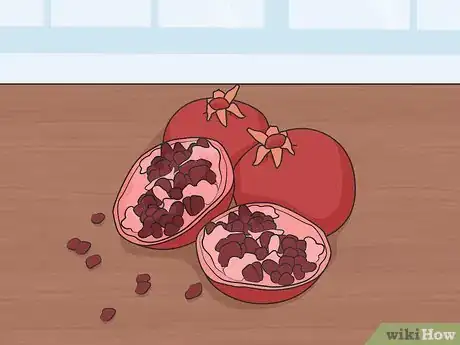






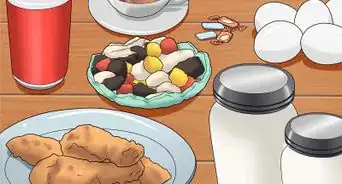
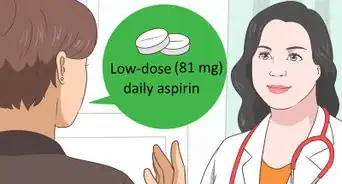
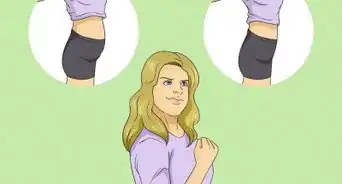
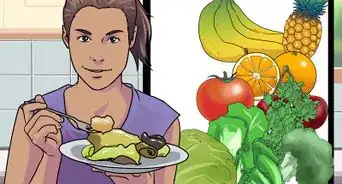
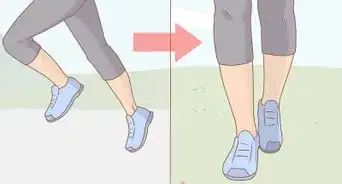

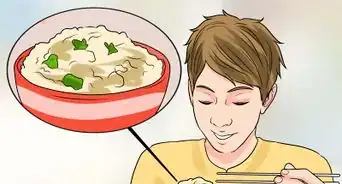


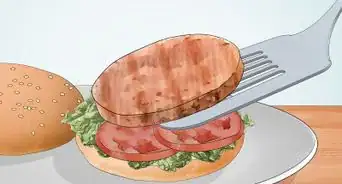

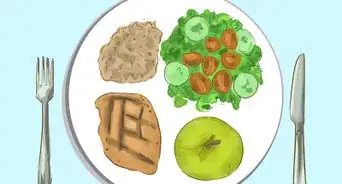









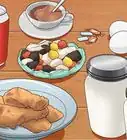
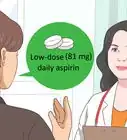
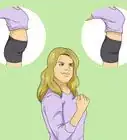





































Medical Disclaimer
The content of this article is not intended to be a substitute for professional medical advice, examination, diagnosis, or treatment. You should always contact your doctor or other qualified healthcare professional before starting, changing, or stopping any kind of health treatment.
Read More...